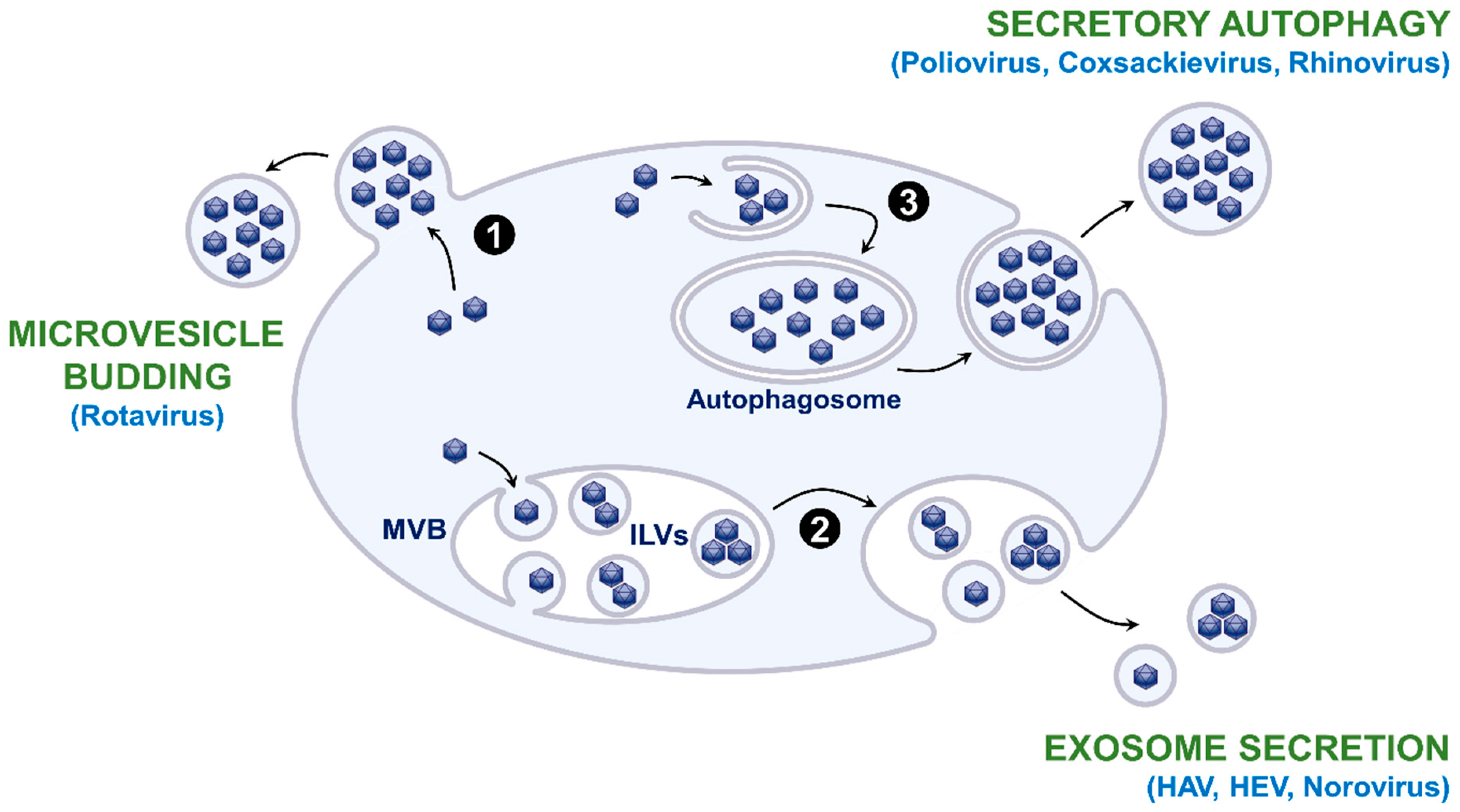Virus life cycle (naked virus):
Two phages: lytic cycle (virulent phase) and lysogenic cycle:
|
Lytic cycle |
Lysogenic cycle |
|
Steps: A. Adsorption: attachment of virus to target host cell. The nucleocapsid molecules (in naked virus) or glycoprotein spikes on envelope help bind virus to specific receptors of target cell. B. Penetration: entry of virus particle into the cytoplasm of host cell. This may occur via membrane fusion (enveloped viruses) or receptor mediated endocytosis in an endocytic vesicle/endosome(non-enveloped virus). C. Uncoating: uncoating is separation of viral nucleic acid from its outer structural components. For enveloped viruses, penetration process itself is the first step of uncoating. In some complex viruses, new proteins are required for completing the process. In pox virus, first of all the outer coat is removed in phagocytic vacuoles by lysosomal enzymes and then the viral uncoating enzyme liberates viral genome in the cytoplasm separating it from internal proteins. The infectivity of parental virus is lost at the uncoating stage. D. Replication/biosynthesis: synthesis of viral genome and viral proteins along with proteins required in viral synthesis, assembly and release. The bacterial chromosome is destroyed. Actually the viral nucleic acid synthesizes the specific mRNA. Then the host resources are utilized for translating mRNA into various viral components. E. Assembly/maturation: packaging and assembly of complete viruses occurs in this stage. The incorporation of the nucleic acid into a capsid is facilitated by formation of protein and nucleic acid in close proximity and by packaging signals, which are specific sequences on viral nucleic acid that determine interactions between core and internal capsid proteins. F. Release: release of virus particles occurs by disintegration of dying cells (lytic cycle).
|
Steps: A. Adsorption: attachment of virus to target host cell. The nucleocapsid molecules (in naked virus) or glycoprotein spikes on envelope help bind virus to specific receptors of target cell. B. Penetration: : entry of virus particle into the cytoplasm of host cell. This may occur via membrane fusion (enveloped viruses) or receptor mediated endocytosis in an endocytic vesicle/endosome(non-enveloped virus). C. Uncoating: : uncoating is separation of viral nucleic acid from its outer structural components. For enveloped viruses, penetration process itself is the first step of uncoating. In some complex viruses, new proteins are required for completing the process. In pox virus, first of all the outer coat is removed in phagocytic vacuoles by lysosomal enzymes and then the viral uncoating enzyme liberates viral genome in the cytoplasm separating it from internal proteins. The infectivity of parental virus is lost at the uncoating stage.
D. Viral integration into host cell chromosome. The integrated or combined genome is called prophage. E. Viral genome (integrated ) replicates along with host cell (bacteria) genome continuously.
Viral replication forwarding in lysogenic cycle may enter into the lytic cycle in replication or biosynthesis step (prophage induction).
The principle of anti-viral therapy is based on preventing any of the step in viral life cycle. |
